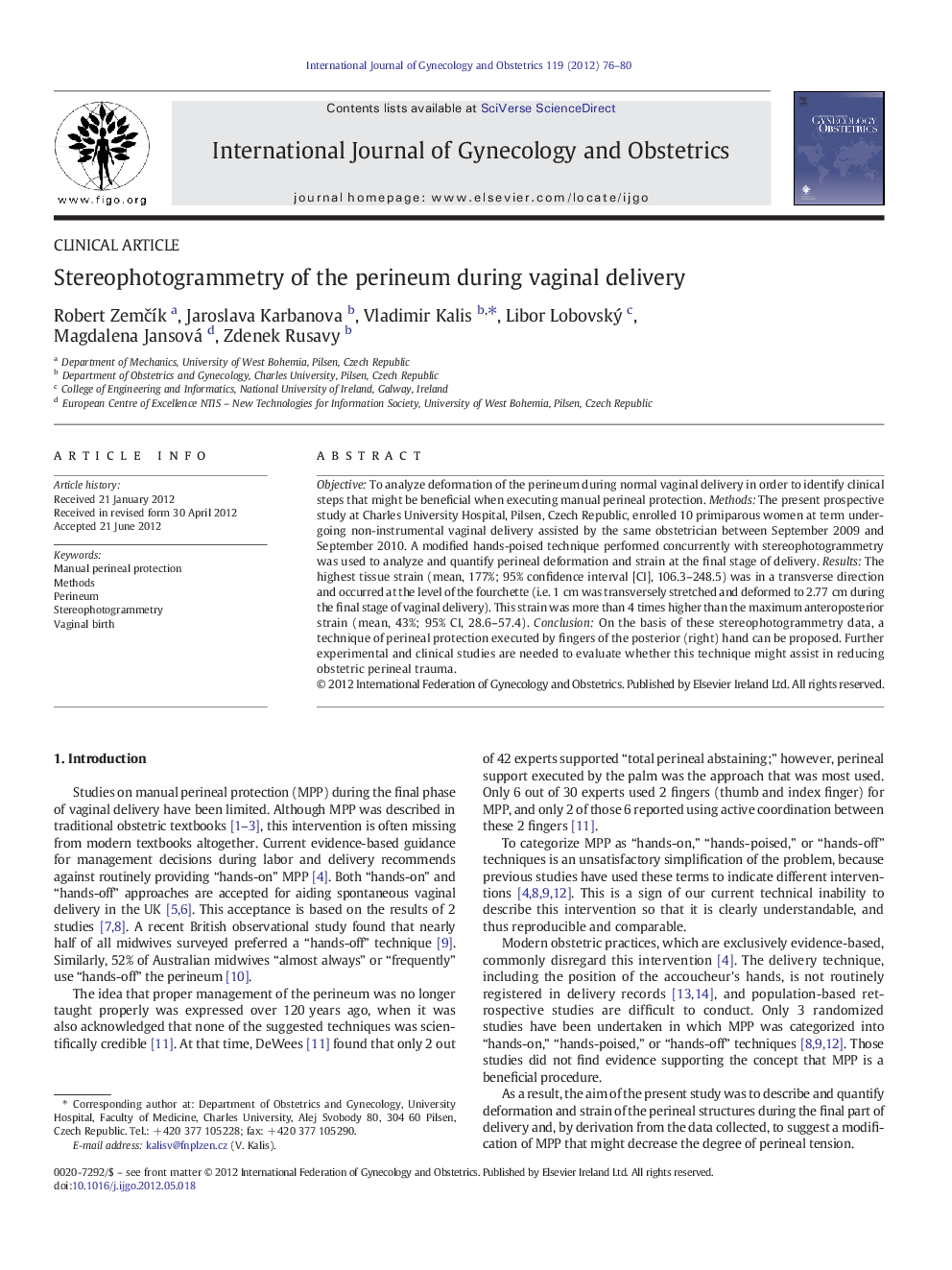| Article ID | Journal | Published Year | Pages | File Type |
|---|---|---|---|---|
| 3951226 | International Journal of Gynecology & Obstetrics | 2012 | 5 Pages |
ObjectiveTo analyze deformation of the perineum during normal vaginal delivery in order to identify clinical steps that might be beneficial when executing manual perineal protection.MethodsThe present prospective study at Charles University Hospital, Pilsen, Czech Republic, enrolled 10 primiparous women at term undergoing non-instrumental vaginal delivery assisted by the same obstetrician between September 2009 and September 2010. A modified hands-poised technique performed concurrently with stereophotogrammetry was used to analyze and quantify perineal deformation and strain at the final stage of delivery.ResultsThe highest tissue strain (mean, 177%; 95% confidence interval [CI], 106.3–248.5) was in a transverse direction and occurred at the level of the fourchette (i.e. 1 cm was transversely stretched and deformed to 2.77 cm during the final stage of vaginal delivery). This strain was more than 4 times higher than the maximum anteroposterior strain (mean, 43%; 95% CI, 28.6–57.4).ConclusionOn the basis of these stereophotogrammetry data, a technique of perineal protection executed by fingers of the posterior (right) hand can be proposed. Further experimental and clinical studies are needed to evaluate whether this technique might assist in reducing obstetric perineal trauma.
